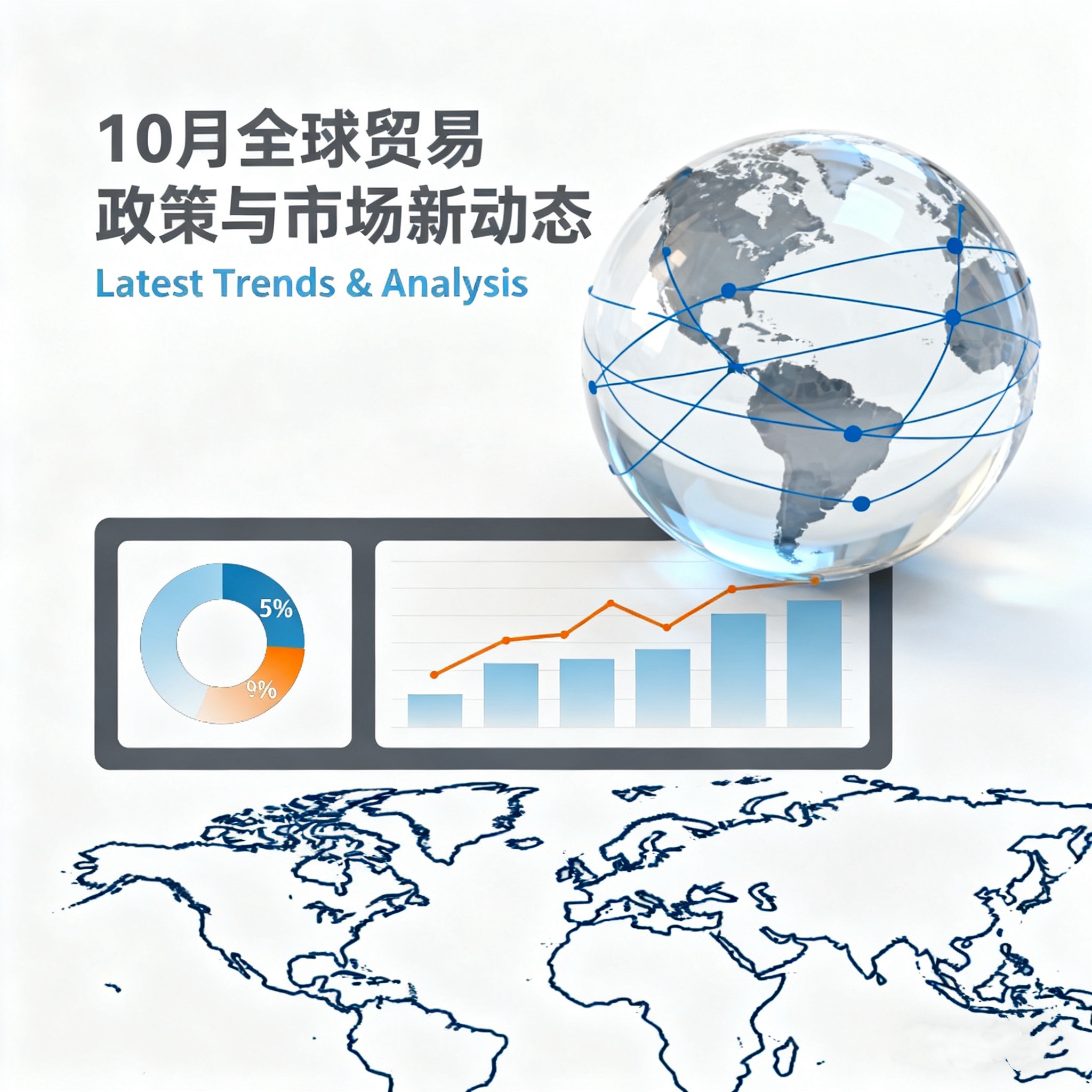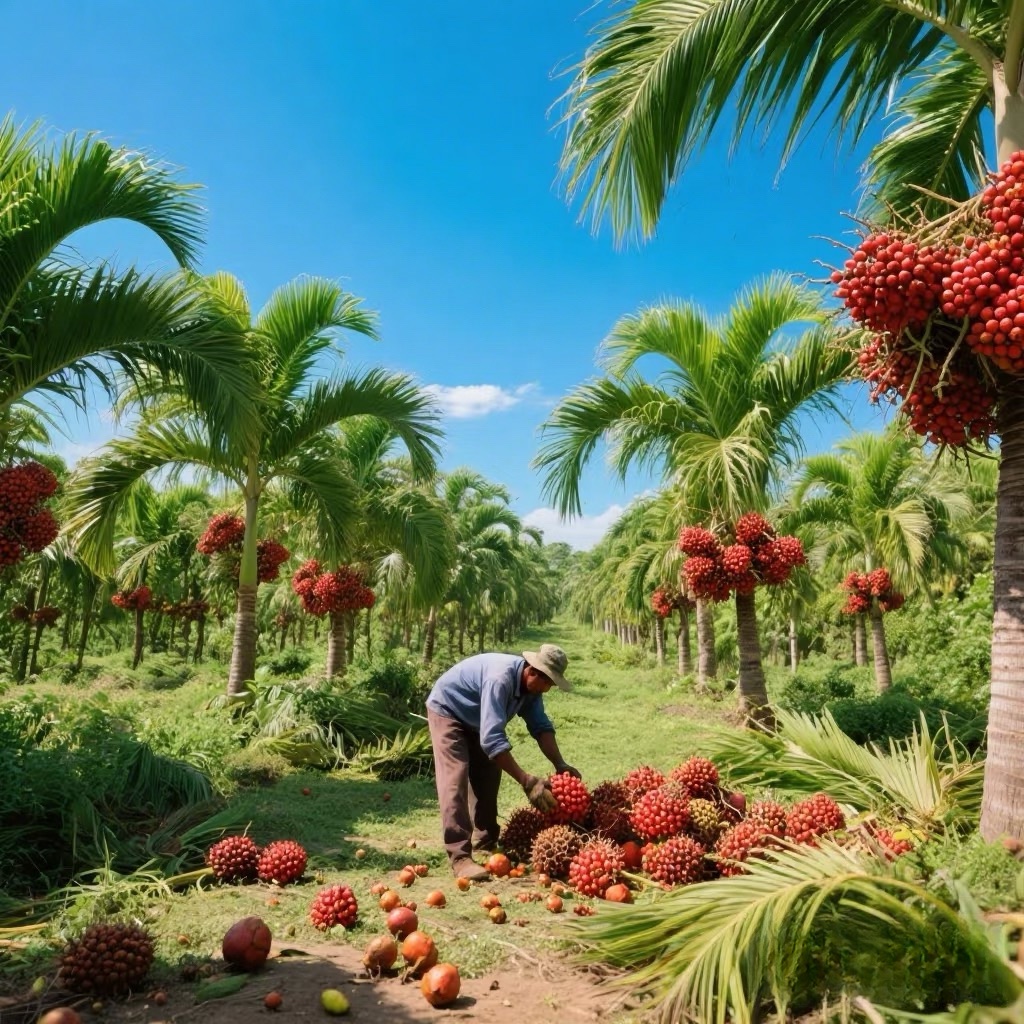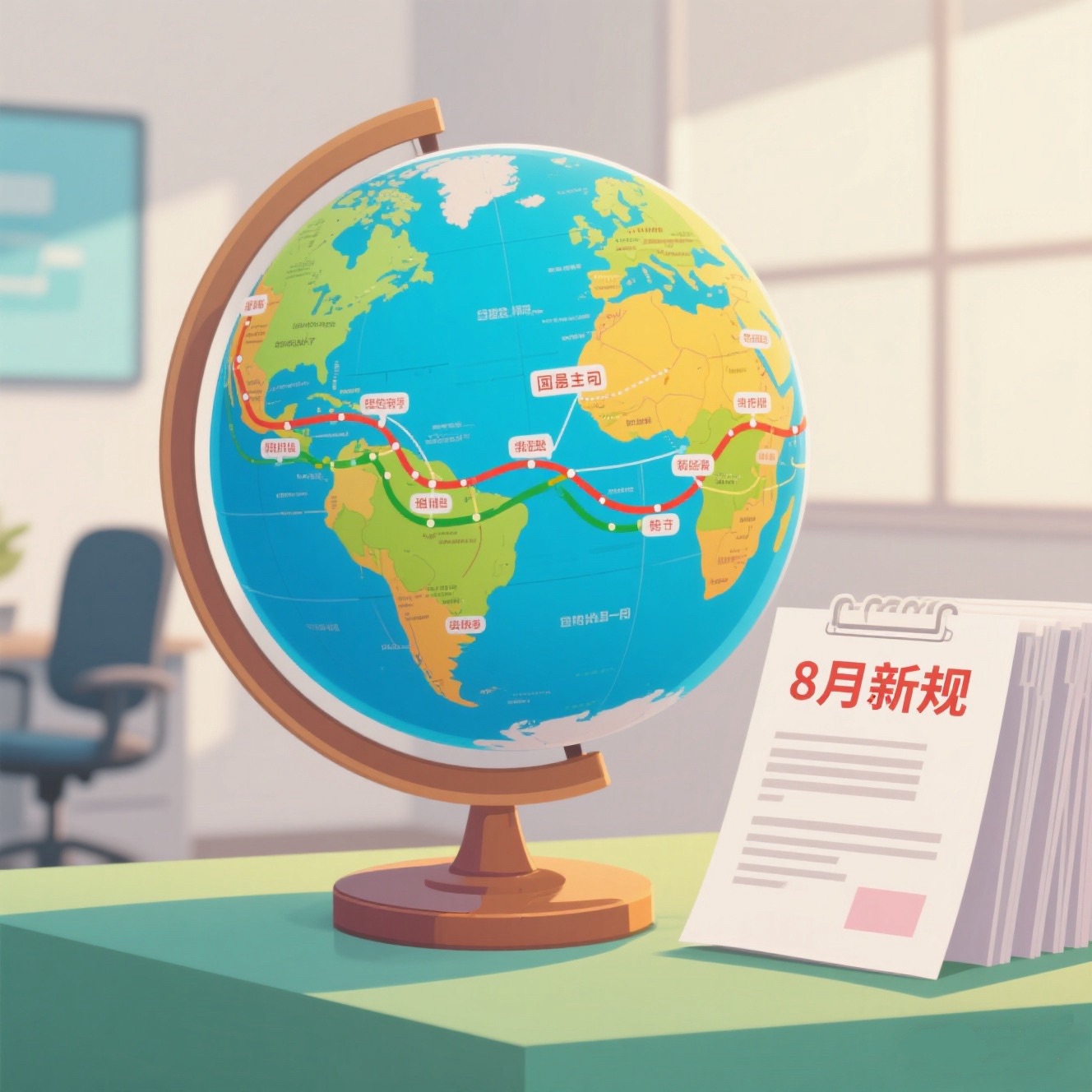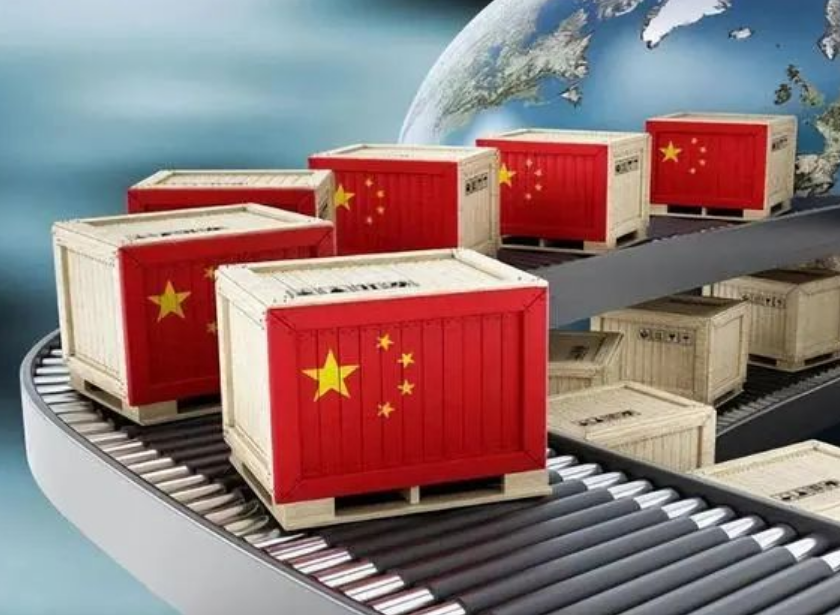
A Guide to Global Trade Policy and Market Developments in October
“At the beginning of October, the global trade environment continues to evolve amidst transformation. The opening of the new Arctic route offers fresh logistics options, while the new US tariff policies and port fee measures indicate that risks from geo-trade frictions still require vigilance.”
In the golden autumn month of October, a series of new regulations and major events impacting international trade have taken effect. From tariff adjustments to customs facilitation, and from the launch of new shipping routes to enhanced industry oversight, professionals in foreign trade need to promptly grasp these changes to navigate the opportunities and challenges in the global market.
I. Key Global Market Events
•Launch of the China-Europe Arctic Express, Revolutionizing Logistics Channels
On September 23, the world's first Arctic container express route connecting China and Europe officially commenced operations. Departing from Ningbo-Zhoushan Port, the route traverses the Arctic Northeast Passage directly to Felixstowe, UK, completing the journey in just 18 days, significantly shortening the transit time compared to traditional routes. This initiative not only enhances logistics efficiency but also helps reduce carbon emissions by approximately 50%, offering a new green logistics solution for Asia-Europe trade.
•US Announces New Round of High Tariffs, Affecting Multiple Industries
On September 25 local time, former US President Donald Trump announced via social media the imposition of additional tariffs on a range of imported products effective October 1. Specific measures include: a 50% tariff on imported kitchen cabinets, bathroom vanities, and related building materials; a 30% tariff on furniture; a 100% tariff on patented and brand-name pharmaceuticals; and a uniform 25% tariff on all imported heavy-duty trucks. Exporters in related industries need to conduct cost assessments in advance.
•US to Impose Additional Port Fees on Chinese Vessels
Based on the final measures of the Section 301 investigation announced by the US Trade Representative (USTR) on August 12, additional port fees will be imposed on vessels built or operated in China starting October 14. This measure will be implemented in phases: the first phase (October 2025 to April 2028) primarily targets mainstream vessel types like container ships and bulk carriers; the second phase (after April 2028) will extend to vessels such as LNG carriers and may restrict their participation in US energy transportation.
II. Domestic Policy and Market Trends
•Full Implementation of Real-Name System for Proxy Exports, Upgrading Compliance Requirements
Effective October 1, according to Announcement No. 17 of 2025 from the State Taxation Administration, enterprises exporting goods through proxy methods (including market procurement trade and comprehensive foreign trade services) must simultaneously report the identity information of the actual consignor and the export value during pre-payment declarations. Failure to report accurately will result in the tax authorities treating the exports as self-operated, making the proxy party liable for the corresponding corporate income tax obligations. This move signifies a more refined regulatory approach towards export activities, aiming to strictly combat practices like "export by proxy without proper authorization" and false declarations.
•Shanghai Introduces 13 Measures to Accelerate Used Car Exports
To vigorously promote used car exports, Shanghai recently released the "Shanghai Action Plan for Promoting Used Car Exports," setting more ambitious development targets. The Plan focuses on four key areas: building a comprehensive service platform, expanding export scale, enhancing customs clearance facilitation, and optimizing service support, proposing a total of 13 specific measures aimed at rapidly cultivating new momentum for used car exports.
•New Rules on Tax-Related Information Reporting by Online Platforms Take Effect
Also effective October 1, the "Rules on the Reporting of Tax-Related Information by Online Platform Enterprises" officially came into force. The new rules require major online platform enterprises to begin reporting identity and income information of operators and practitioners on their platforms to the tax authorities, marking the formal extension of tax supervision into the digital economy sector.
III. Updates on Trade Management Measures in Various Countries
•Tariff and Tax Policy Adjustments
✾Brazil: Approved zero tariffs for 15 key products not produced domestically, involving specific models of lithium-ion batteries, automatic resuscitation systems, electrical connectors, etc., to enhance the competitiveness of its domestic industry.
✾India: Implemented new Goods and Services Tax (GST) rates starting September 22. The tax rate on clothing and accessories with a unit price exceeding 2,500 Rupees increased from 12% to 18%; low-priced clothing enjoys a preferential rate of 5%.
✾Cuba: Extended the zero-tariff policy for essential goods like food and medicine until January 31, 2026, to alleviate material shortages, and removed the import value limit.
✾Jordan:Imposed a three-year safeguard duty on imported safety footwear starting September 1, set at 5.75 Jordanian Dinars per pair in the first year, with slight annual reductions.
•Changes in Rules of Origin and Customs Clearance
✾Iraq: Requires that the Certificate of Origin for products exported to Iraq must bear a QR code containing all product information, which will serve as the primary basis for authentication.
✾Kenya:The Kenya Revenue Authority (KRA) relaxed mandatory requirements for Certificates of Origin (CoO), clarified alternative documents in the absence of a CoO, and exempted 10 product categories (including used goods) from CoO rules.
✾UK: Updated guidance on importing composite products, simplifying the weight declaration process within the Import of Products, Animals, Food and Feed System (IPAFFS) by allowing a single total weight declaration for the entire composite product.
•Product Standards and Market Supervision
✾Russia: Launched an 11-month pilot mandatory labeling program for daily necessities like manicure sets, dental floss, and towels starting September 25, to combat illegal circulation and counterfeit products.
✾South Korea: The Ministry of Food and Drug Safety (MFDS) announced that starting October 1, it will strengthen inspections for phenacetin in all imported livestock products (including meat, by-products, and edible eggs), with the standard being "not detected."
✾Iran: New customs regulations effective September 15 simplified automotive import procedures by measures such as eliminating the separate application for vehicle standard permits.
✾Philippines: The Department of Trade and Industry (DTI) announced an extension of the registration deadline for the E-commerce Trustmark until December 31, to encourage more SMEs to complete certification.
IV. Summary and Outlook
At the beginning of October, the global trade environment continues to evolve amidst transformation. The opening of the new Arctic route offers fresh logistics options, while the new US tariff policies and port fee measures indicate that risks from geo-trade frictions still require vigilance. Examining policies across countries reveals a clear trend: on one hand, there are efforts to promote imports by simplifying procedures and reducing tariffs on key goods; on the other hand, regulations in areas such as taxation, rules of origin, and product labeling are becoming stricter and more digitalized. Foreign trade enterprises can only navigate the complex international market steadily and sustainably by maintaining a sharp insight into policy changes and strengthening their own compliance capabilities.













